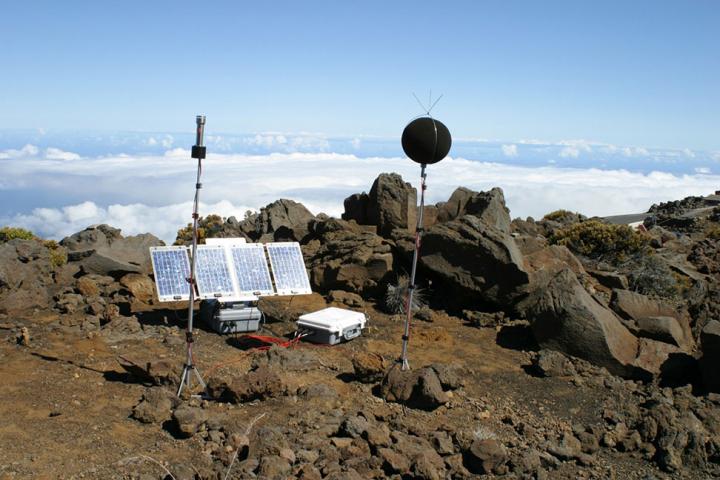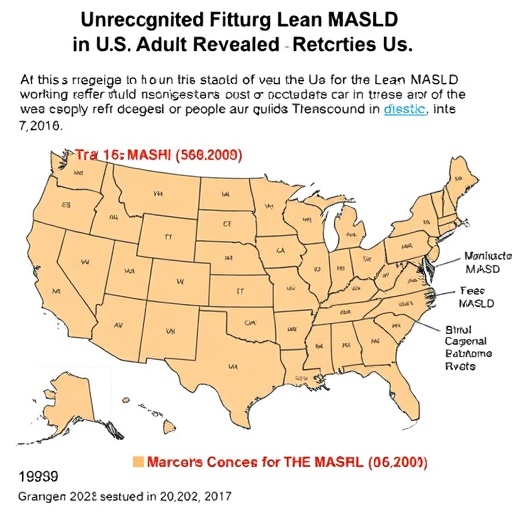Human-generated noise can have an effect on birds, even when there’s no direct threat

Credit: National Park Service
SAN DIEGO, December 4, 2019 — National Park Service scientists analyzed nearly 1 million* 10-second audio recording samples from national parks across the country and discovered a small increase in bird sound detection when an aircraft sound is also detected.
On average, across all parks monitored, the odds of hearing a bird sound increases by 2% when aircraft sound is detected within that 10-second sample, a surprise to the scientists.
During the 178th Meeting of the Acoustical Society of America, held Dec. 2-6, at the Hotel del Coronado in San Diego, Kurt Fristrup will present the National Park Service’s findings and how human responses to noise might be studied.
“We might have predicted a decrease in our ability to detect the calls due to coincident noise,” he said. “Still more unexpected, there is a statistically significant effect of the history of exposure. For aircraft sounds, the increased sound detection decays with time, but there is a measurable effect out to three hours.”
The historical effects are additive, he said, in the sense that an aircraft from two hours ago might elevate detection probability by 0.3%, and an aircraft from 10 minutes ago might elevate detection probability by 2.3%.
Fristrup and Nathan Kleist are still working on the aggregate effects of current noise exposure histories across all sites. “Given the histories of noise exposure within our data, how much are bird sound detection rates increased above the natural, noise-free condition? We’re preparing a manuscript to provide more detailed documentation of these results,” Fristrup said.
An increase in vocal activity of a few percent would be difficult to measure without this massive dataset. “The extensive presence of aircraft noise exposure in time and space implies that birds are chronically producing more sound in many locations,” Fristrup said. “We’ll reanalyze existing data to determine the types of sounds that are more common — song, call notes, etc. — and which species of birds are affected.”
Future field studies might explore physiological and demographic correlates of altered acoustic behavior. “If findings emerge of significant physiological or ecological consequences for wildlife, then aircraft noise may be grouped with other environmental concerns for which dilution is not the solution,” he said.
The analysis also provides a model for more detailed studies of human responses to noise. “Community noise studies and regulations adopt arbitrary intervals to summarize noise exposure: 60 minutes, 24 hours or 365 days,” Fristrup said. “It’s likely that annoyance, awakenings and health effects respond to noise on different time scales.”
*The sample size is 894,060, with data collected from 130 sites in 48 parks, recorded from 2011 to 2017.
Fristrup’s presentation 3aAB5, “Exploring the effects of aircraft noise on bioacoustic activity in national parks,” will be at 9:25 a.m. PT, Wednesday, Dec. 4, in the Edison room of the Hotel del Coronado in San Diego.
###
MORE MEETING INFORMATION
USEFUL LINKS
Main meeting website: http://acousticalsociety.
Technical program: https:/
Press Room: http://acoustics.
WORLDWIDE PRESS ROOM
In the coming weeks, ASA’s Worldwide Press Room will be updated with additional tips on dozens of newsworthy stories and with lay language papers, which are 300-500 word summaries of presentations written by scientists for a general audience and accompanied by photos, audio and video. You can visit the site during the meeting at http://acoustics.
PRESS REGISTRATION
We will grant free registration to credentialed journalists and professional freelance journalists. If you are a reporter and would like to attend, contact the AIP Media Line at 301-209-3090. For urgent requests, staff at [email protected] can also help with setting up interviews and obtaining images, sound clips or background information.
LIVE MEDIA WEBCAST
Press briefings will be webcast live from the conference Tuesday, Dec. 3, in Hospitality Suite 3103 of the Hotel del Coronado in San Diego. Register at https:/
ABOUT THE ACOUSTICAL SOCIETY OF AMERICA
The Acoustical Society of America (ASA) is the premier international scientific society in acoustics devoted to the science and technology of sound. Its 7,000 members worldwide represent a broad spectrum of the study of acoustics. ASA publications include The Journal of the Acoustical Society of America (the world’s leading journal on acoustics), Acoustics Today magazine, books, and standards on acoustics. The society also holds two major scientific meetings each year. For more information about ASA, visit our website at http://www.
Media Contact
Larry Frum
[email protected]
301-209-3090




